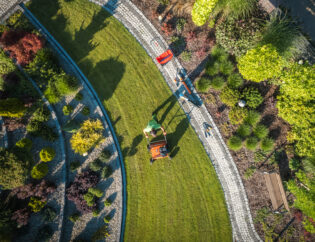
إن استخدام المبيدات المفرط ليس هو الحل الأمثل في مكافحة سوسة النخيل الأحمر، فإن أهم عوامل المكافحة لآفة سوسة النخيل الحمراء هي الوقاية لأنها الوقاية تخفض نسبة 80%.
أهم التوصيات بضرورة اتباع عدد من الخطوات لوقاية النخيل من الإصابة بـ سوسة النخيل الحمراء وهي كالآتي:
1-أولى خطوات الوقاية هي عملية التقليم والتكريب تتم في فصل الشتاء.
2- إزالة الفسائل غير المرغوب فيها.
3- إزالة الرواكيب الموجودة في النخيل.
4- يتم عمل عملية رش في مكان فصل الفسائل والتقليم.
5- عند فصل الفسائل في شهري مارس وشهر نوفمبر للزراعة يتم فحصها جيدة، ويتم التخلص من الفسائل المصابة في حفرة يتم رشها بالمبيدات مع الكيروسين.
6- يتم غمر الفسائل السليمة في محلول ومبيد لمدة 10 دقائق قبل ساعتين وبعدها يتم زراعتها، فإذا كانت هناك إصابة غير ظاهرة يتم التخلص منها، وإذا كانت سليمة فإنه بهذه الطريقة يتم عمل حماية لها لمدة 6 شهور.
7- الاهتمام بالتسميد وعدم تزويد اليوريا وخاصة في الأعمار الصغيرة أقل من سنوات.
8- ضرورة عمل دائرة حول النخلة أثناء الري لتفادي عمل الجذور الهوائية.
9- التكريب في الصيف يساهم في زيادة نسبة الإصابة، لذا من المهم التكريب في الشتاء
Think outside the box.
@Gardenyadvise
Go for walks in the countryside, into the woods, bring in branches and random single stems,” Crossley said.“You don’t need huge bunches of perfect flowers to create something beautiful.Single stems displayed as specimens dotted down a table can look just as effective as a huge arrangement.”
Even a small table centerpiece can add sparkle.
Amelia Posada, a butcher turned florist and Pasadena native, popped up on the Southern California floral radar with some of her creations, especially the build-your-own-terrarium bar in a ticket booth at the Ace Hotel in downtown Los Angeles. It drew raves. Her interests now are centered on her company, Perfect Branch, which provides gorgeous and out-of-the-ordinary arrangements for special events and private homes.
Posada recently shared her expertise and musings during an intimate gathering at Fresh in downtown Pasadena. The shop introduced its new Rose Deep Hydration Facial Toner and the owner decided to host a flower arranging miniworkshop. Fresh thanks its customers with special fun promotions from time to time, according to Jordan Strang, assistant manager.
“We wanted to celebrate the launch of our rose toner by elevating our interaction with the community and to give some of our VIP clients an experience for all of their senses,” she said.
It did. For Posada, the quick Centerpiece 101 class took her all of about five minutes, proving that with a little bit of knowhow it’s possible to bring elements of nature found outdoors inside. With graduation parties, baby and wedding showers or simply a lovely dinner with family and friends, it’s possible to create sweet-smelling magic.
Posada is not a dainty rose display kind of woman. Her artistic vision leans more toward edgy and eclectic, opting for works that have layers, colors, texture and movement. Yet, she didn’t deny the pleasure a bouquet can bring.
“A floral arrangement can bring a room to life, providing a relaxing and luxurious ambience,” she said.
We live in a DIY age, Posada adds, in which people want to do more for themselves, whether it’s prepping food or flowers. All it takes is getting started.
For example, to create a simple centerpiece, grab as much greenery as possible and put it in a vase filled with water. Don’t be afraid to fill the vessel with extra pieces of greenery to form a base. Keep all the elements no taller than the length of your elbow to the tips of your fingers.
For the workshop, she incorporated 12 roses of various types and then cut them at different heights to add movement and interest. Fill in with as much flora as needed.
While commercial pieces were used, harvesting from your own garden is cost-effective as well as enjoyable.
An easy twist is to change up containers. Instead of typical vases, try jam jars, empty food tins, olive oil drums, teapots, shells and even vegetables that are scooped out. Crossley likes artichokes, pumpkins and cabbages.
“Like a lot of people I am definitely happiest when I’m in and surrounded by nature,” she said. “My home is filled with natural treasures — shells, flowers, plants, crystals, straw baskets. A lot of the fun is collecting and sourcing it all, and in the book I wanted to inspire and show how easy it is to do this and what you can create with nature.
“Our lives are so filled with technology now. I think it’s really easy to submerge ourselves in it and we forget how good just being outside, in fresh air, away from a laptop or mobile phone, can be for us.”
Fellow author Emma Hardy has taken the idea and further refined it in her book, “Tiny Tabletop Gardens” (CICO Books).
“The idea for this book was to create beautifully planted containers on a small scale (although there are a few ideas for larger scale planters, too),” she said in an email. “I like the idea of gardening when you don’t have much space, using window sills, terraces and patios and filling them with beautiful flowers and foliage plants in interesting containers.
“I love to mix lots of different plants together and try to cram as many into containers as I can so that I create a small-scale garden in a tub or pot. I wanted to show that you don’t need to have a garden or much outside space to bring out your green-fingered side, and that everyone can enjoy growing and nurturing plants both inside and out.”
When she puts a planter together, she opts for color first, mixing them and textures usually pulling out plants in the garden center. She tries different plant combinations until finding one she likes.
“At the moment, I love the prairie planting look so am using lots of tall, delicate floral plants and mixing them with grasses,” she said. “Generally, I tend to use taller plants at the back of the planter and smaller ones toward the front, although sometimes mixing them up can give a lovely, jumbled look that I love.”
Hardy prefers to have cut flowers in her house, but having plants inside gives much longer displays. Succulents are fantastic indoor plants, she says, requiring very little attention and look great grouped together on tabletops or shelves.
“I also love to use pretty alpine plants in old tins, too, to create miniature gardens indoors.”









